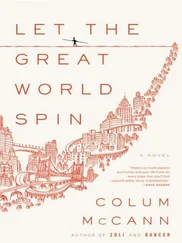1 ...6 7 8 10 11 12 ...18 The whole country was following Brunel’s efforts to launch the reluctant ship and the press were increasingly critical. ‘Why do great companies believe in Mr Brunel?’ scoffed The Field. ‘If great engineering consists in effecting huge monuments of folly at enormous cost to share holders, then is Mr Brunel surely the greatest of engineers!’ There was no shortage of letters offering diverse advice. One reverend gentleman thought the best plan was to dig a trench up to the bows and then push the ship in. Another claimed that 500 troops marching at the double round the deck would set up vibrations that would move the vessel. Yet another idea was to float the ship to the river on cannon balls or even shoot cannon balls into the cradles. Scott Russell, too, aired his theories on just why the ship was ‘seizing up’ and reluctant to move. He suggested the two moving surfaces should have been wood not iron.
December and January were bitterly cold. By day, the ship looked mysterious in dense fogs; the nights were black as the river itself. Brunel stood alone against a background of criticism; his sheer unremitting determination to get the ship launched permeated every impulse. By early January, he had acquired eighteen hydraulic presses and they were placed nine at each of the cradles. It was thought that their combined power was more than 4,500 tons.
The new hydraulic presses were so successful that as the month advanced the Thames water was lapping her hull. The next high tide of the thirtieth was set for launch day. But the night of the twenty-ninth brought sheeting horizontal rain and a strong southwesterly wind. Brunel knew that if they got the ship launched, the difficulties of managing the craft in the shallow waters of the Thames, where at this point it was not much wider than the length of the ship, would be considerable in such high winds. Miraculously, though, 31 January was still and calm. The Thames shimmered like a polished surface.
At first light, Brunel started the launch process in earnest. Water which had been pumped into the ship the day before to hold her against the strong tide was now pumped out. The bolts were removed from wedges that were holding the ship. Nothing more could be done until the tide came up the river, which it did with surprising speed and force. Messengers were sent with desperate urgency to collect the men in order not to miss the opportunity which seemed to have arrived at last. The hydraulic presses were noisy with effort and the great Tangye’s rams hissed and pushed at the massive structure. Two hours of shoving and straining and tension down the last water-covered part of the launch-ways saw the vast iron stern afloat. The forward steam winch hauled and, quickly, the huge bow responded and moved with solemn deliberation into the water. There were no crowds to witness this defining moment; just a few curious onlookers there by accident as the colossal ship moved from one element to another. As the news spread, bells rang out across London as the Great Eastern floated for the first time.
Brunel, who had not slept for 60 hours, was able to board with his wife and son and at last could feel the movement of the ship as she responded to the currents of the Thames beneath her. Four tugs took the Great Eastern across the river to her Deptford mooring where she could now be fitted out. The cost of the launch was frightening – some estimates suggest as much as £1,000 per foot – and the ship had so far consumed £732,000, with Brunel putting in a great deal of his own money. But the cost to Brunel’s health was higher still. Over the past few months he had pushed himself to the limits of endurance. It seemed the Great Ship owned him in body and soul and gave him no relief from the endless difficulties of turning his original vision into a reality. Now that the Great Eastern was finally in the water after years, Brunel’s doctors insisted that he take a rest.
When Brunel returned in September 1858 he found that the Eastern Steam Navigation Company was in debt, that there was no money to fit the ship out and there was talk of selling her. The company tried to raise £172,000 to finish the work on the ship, but this proved impossible. The financial problems of the board were only resolved when they formed a new company, ‘the Great Ship Company’, which bought the Great Eastern for a mere £160,000, and allotted shares to shareholders of Eastern Steam in proportion to their original holding. Brunel was re-engaged as engineer and, with his usual energy, became busy with designs for every last detail, even the skylights and rigging. Yet he was harassed now with health problems and doctors diagnosed his recurring symptoms as ‘Bright’s disease’, with progressive damage to his kidneys. They insisted that he must spend the winter relaxing in a warmer climate. The last thing Brunel wanted was to leave his Great Ship when there was still so much to supervise. Reluctantly, he agreed to travel to Egypt with his wife and son, Henry.
Before he left, with memories of the impossible position that the board had faced when dealing with Scott Russell, he urged them to ensure that any contract they entered into for fitting out the ship was absolutely binding. However, with Brunel abroad and clearly unwell, the board, left with bringing to completion such a unique vessel, opted for the devil they knew. Scott Russell had built the hull and he was building the paddle engines. He was, after Brunel, the man who knew most about the Great Ship. It was not long before the charming, charismatic Scott Russell with his delightfully low-priced, somewhat ambiguous contract was back on board.
In May 1859, Brunel returned. The enforced holiday appeared to have been beneficial and his friends were hopeful that he was fully recovered. Privately, he knew this was not the case. His doctors had made it quite clear that his disease was progressing relentlessly. Only so much time was left for him and he should certainly not overexert himself. Yet, for Brunel, rest was out of the question. Whatever private bargain he may have made with himself, it proved impossible for him to resist the pull of the Great Eastern. His ship came first, whatever the cost.
With the maiden voyage planned for September, all Brunel could see was the enormous amount still needing to be done. So he rented a house near the ship and, with his usual energy, dealt daily with the many problems that needed his expert attention. Everything from the engine room to the rigging was checked; the best price of coal ascertained; the crew for the sea trials named; progress reports on the screw engines prepared; notes for Captain Harrison; advice on the decoration in the grand saloon: nothing escaped his practised eye. On 8 August 1859, a grand dinner was given for MPs and members of the House of Lords in the richly gilded rococo saloon but Brunel was too exhausted to attend. It was a glamorous occasion and, in Brunel’s absence, Scott Russell rose to it, shining in the glowing approbation of the distinguished audience.
On 5 September, Brunel was back on board his ship. He had chosen his cabin for the maiden voyage and stood for a moment on deck by the gigantic main mast while the photographer recorded the event. He had lost weight; his face was thinner, his clothes hung on him. In one hand he held a stick to help him get about; his shoes were clean and polished. He had a fragile, expended air. As he looked at the camera – his eyes, as always, concentrating, absorbed in some distant prospect – he looked like a man with little time left. Just two hours later he collapsed with a stroke. He was still conscious as his colleagues carried him very carefully to his private coach and slowly drove him home to Duke Street as though he were breakable.
The Great Eastern made her way alone now, without Brunel’s attention, directed by fussing tugs down the Thames to Purfleet in Essex and beyond for her sea trials. Once out to sea, she was magnificent. ‘She met the waves rolling high from the Bay of Biscay,’ reported The Times. ‘The foaming surge seemed but sportive elements of joy over which the new mistress of the ocean held her undisputed sway.’
Читать дальше












